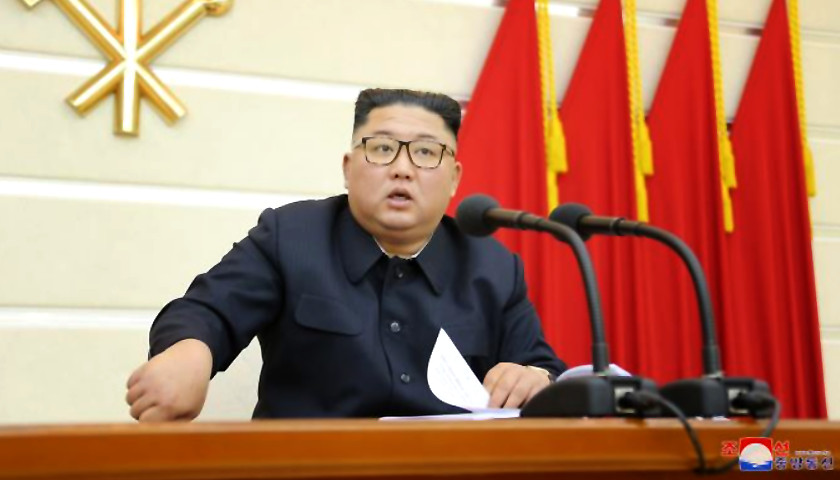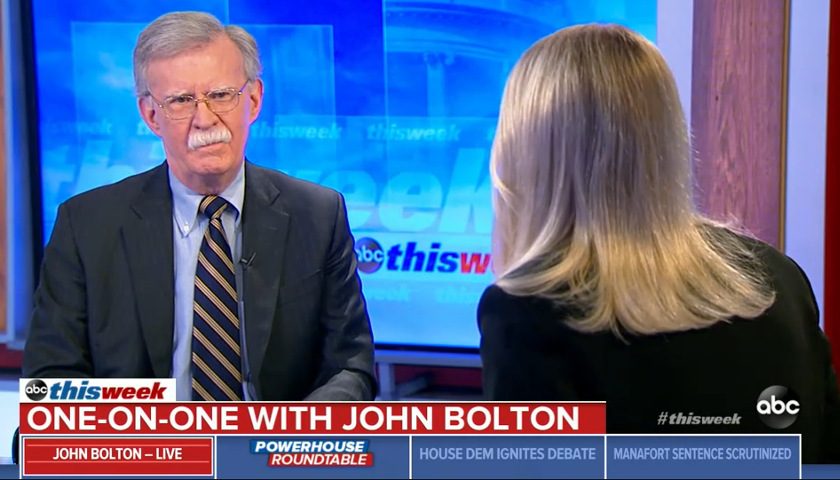By Robert Romano
In “The Art of the Deal,” President Donald Trump wrote: “Leverage: don’t make deals without it.”
Three developments in the past week prove that President Trump’s approach to foreign affairs where he utilizes all the tools in his arsenal including tariffs, sanctions, and overall pressure — are yielding dividends in the Asia Pacific region because they exerted significant leverage by the U.S.
South Korea and the U.S. have agreed to new amendments to the U.S.-South Korean trade agreement, where South Korea agreed to reduce its steel export quota by 30 percent and to double the amount of American-made cars that are imported.
In exchange, the U.S. will grant South Korea an exemption to President Trump’s 25 percent tariff on steel imports.
Senior administration officials have also hinted that a new currency agreement is in the works that would address exchange rate and Treasury markets manipulation.
These were all things Trump had spoken of last June when South Korean President Moon Jae-In visited the White House. Now they’re actually being delivered.
All because of Trump’s tough stance on trade, including the tariffs but also his call for trade to be fair and reciprocal. The discussions were ongoing, South Korea was already at the table, but after the tariffs were announced, a new agreement was quickly hammered out, which ended up being in both the U.S. and South Korea’s interests. South Korea is the number three exporter of steel to the U.S.
Meanwhile, China is the number one exporter of steel to South Korea, leading some to worry that it could become a pass-through for Chinese steel if South Korea were given an exemption to the steel tariffs. A hard quota stops that dead in its tracks, the administration officials said, because shipping Chinese steel instead of their own would harm South Korean producers.
Elsewhere, Trump’s new $60 billion of tariffs against China over intellectual property abuses have brought Beijing to the negotiating table, Reuters reports: “Premier Li Keqiang said earlier on Monday that China and the United States should maintain negotiations and repeated pledges to ease access for American businesses to China’s markets. Li told a conference that included global chief executives that China would treat foreign and domestic firms equally, would not force foreign firms to transfer technology and would strengthen intellectual property rights, repeating promises that have failed to placate Washington.”
U.S. officials have heard all this before, but there it is. The U.S. and China are engaging in talks to settle trade differences. With the tariffs in play, this could finally result in concessions to each side’s benefit. To see these promises realized, President Trump will need to keep the pressure on to get China to reduce its tariff and non-tariff barriers to trade, including currency.
Because, as we’re seeing elsewhere, the pressure is working.
Perhaps most importantly, now it is being reported that North Korean leader Kim Jong Un after meeting with Chinese President Xi Jinping has agreed in principle to discuss denuclearizing the Korean Peninsula, with Kim stating, “The issue of denuclearization of the Korean Peninsula can be resolved – if South Korea and the United States respond to our efforts with goodwill, create an atmosphere of peace and stability while taking progressive and synchronous measures for the realization of peace.”
President Trump responded favorably on Twitter, stating, “Received message last night from Xi Jinping of China that his meeting with Kim Jong Un went very well and that Kim looks forward to his meeting with me. In the meantime, and unfortunately, maximum sanctions and pressure must be maintained at all cost[s]!”
This could be a major, history-changing breakthrough. This is like moving mountains. Recall Trump promised “fire and fury” would be rained down on North Korea if it came to war. The U.S. has instituted stiff sanctions on North Korea and has placed immense pressure on China to act.
Now it’s all coming together. Hopefully.
Diplomacy, which has always been a possible avenue of resolution, appears to be fully engaged now. Peace could be within sight. It may not work out in the end. But it never would have been possible without the credible threat of force promised by Trump, backed up by the sanctions.
Meaning, all of Trump’s doomsayers who promised a new Great Depression from the tariffs and nuclear Armageddon from his tough stance against North Korea may be wearing a lot of egg on their faces when this is all over. Ironically, they might have even helped enhance Trump’s leverage with his deal-making, since the consequences of not making a deal being reported might be grave.
There are still many challenges that need to be overcome, and the road forward is fraught with numerous pitfalls, but there are real opportunities here that did not exist prior to President Trump. And so far, it looks like Trump’s art of the deal might actually be working after all.
– – –
Robert Romano is the Vice President of Public Policy at Americans for Limited Government.





